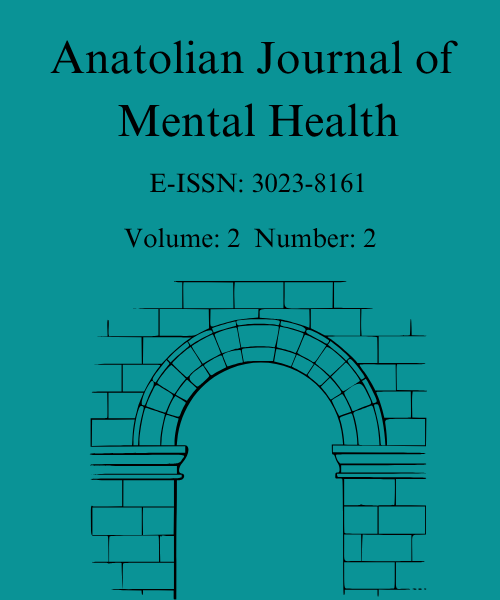The impact of virtual sports on the functional performance of college students with disabilities
The impact of virtual sports on the functional performance of college students with disabilities
DOI:
https://doi.org/10.5281/zenodo.17097843Keywords:
disabilities, college students, functional disabilities, virtual sports, virtual reality, static balancing, breath holding, mindfulness, vitalityAbstract
Modern education actively introduces new technologies that help improve the educational process. The presence of health restrictions leads to a decrease in the physical activity of the student. Students exempt from physical education classes experience a further decline in physical activity.. Virtual reality technologies can help to overcome the gap between the need for physical activity of students and the health condition that prevents it. Objective: to assess the effect of virtual sports on the functional characteristics of health and vitality of college students with health restrictions. Method: classical experiment. Subjects: 30 college students (17-18 years old) with disabilities; including 16 girls. They were randomly divided into control and experimental groups (15 students each (8 girls and 7 boys)). Diagnostics: breath holding on inhalation (Stange test), static balancing, mindfulness questionnaire (MAAS), vitality questionnaire, "Subjective assessment of diseases" questionnaire. Impact: 3 virtual sports sessions over 3 weeks using VR simulators (rock climbing - The Climb 2, archery: Archery Kings, racket games: First Person Tennis). Statistics: Wilcoxon test, ANOVA analysis of variance. Results: The experimental group students significantly increased: static balancing time (by 29.7 sec. (p<0.01) and stress resistance. The following increased at the trend level: breath holding time on inhalation (by 6.2 sec. (p<0.10) and overall vitality. No changes were found in the control group. Functional health indicators are also affected by the duration of sports sessions. Conclusion: Virtual sports sessions over 3 weeks, 1 session per week, have proven effective for students with disabilities.
References
Bauer, A. and Andringa, G. The Potential of Immersive Virtual Reality for Cognitive Training in Elderly (2020). Gerontology, 66(6), 614—623.
Berezina, T., Finogenova, T., Zavyazkina, K. and Lyusova, T. (2023) Effects of virtual reality training on bio- and psycho-markers of aging in retired individuals. E3S Web Conf., 431, 05020. DOI: https://doi.org/10.1051/e3sconf/202343105020
Feng, Y., You, C., Li, Y. ., Zhang, Y. and Wang, Q. (2022). Integration of Computer Virtual Reality Technology to College Physical Education. Journal of Web Engineering, 21(07), 2049–2072. https://doi.org/10.13052/jwe1540-9589.2173
Games of the Future. New-format sports show that will combine competitions in the physical and digital dimensions International multi-sports tournament in the phygital concept of the Futureof the Futureof the Future Games G (2024). https://kazan2024.gofuture.games/en#submenu:more2 (viewed: 10.02.2025).
Hanakova, A., Hudcova, B., Hrudova, T., Krahulcova, K., Kroupova, K., Potmesil, M., Ruzickova, V., Simunkova, K., Spinarova, G., Urbanovska, E. and Vachalova, V. (2022). Safety from the perspective of university students with disabilities. ICERI 2022 Proceedings, 2526-2532. doi: 10.21125/iceri.2022.0631
Jamaludin, N. F., Shamsuddin, R., Mohd Nor, N. A., Sedek, S. F., & Hadipornama, M. F. (2024). Application of Virtual Reality (VR) in Health, Safety and Environment Subject for Fire Exit Training Module. Journal of Advanced Research in Technology and Innovation Management, 12(1), 1–15. https://doi.org/10.37934/jartim.12.1.115
Lu, J., Sun, Q., Ma, W. Liu, T., Yao, D. and Gong. (2024). The effect of virtual reality action games on attention functions: an EEG study. Curr Psychol 43, 32336–32346 (2024). https://doi.org/10.1007/s12144-024-06667-1)
Panzavolta, S. (2018). Virtual Reality as a Tool for Enhancing Learning in At-Risk Students and Increasing School Inclusion. In I. Management Association (Ed.), Virtual and Augmented Reality: Concepts, Methodologies, Tools, and Applications, 566-581. https://doi.org/10.4018/978-1-5225-5469-1.ch027
Pérez-Muñoz, S., Castaño-Calle, R., Morales-Campo, P. and Rodríguez-Cayetano, A. (2024). A Systematic Review of the Use and Effect of Virtual Reality, Augmented Reality and Mixed Reality in Physical Education. Information, 15, 582. https://doi.org/10.3390/info15090582
Rezapkina, G. V. (2017). Self-destructive behavior: causes and prevention. Academic Bulletin of the Academy of Social Management, 2 (24), 18-24. (In Russ., аbstr. in Engl.).
Roshanpour, R. And Nikroo, M. (2020). Investigating the Impact of Virtual Reality and Gamification on Improving Physical Activities in School. DOI: 10.21203/rs.3.rs-47976/v1
Sikora, D., Żerdziński, P. and Linek, P. (2024). An assessment of Y balance test in adolescent female handball players with chronic ankle instability. Polish Journal of Sports Medicine. 40. 177-185. DOI:10.5604/01.3001.0054.8720.
Singh, R., and Awasthi, S. (2024). Technology Integration in Physical Education: Exploring the Use of Wearable Devices and Virtual Reality for Enhancing Student Engagement and Learning Outcomes. Innovative Research Thoughts, 10(2), 70–74. https://doi.org/10.36676/irt.v10.i2.09
Skorobogatova, T.N., Margolin, A.D. (2024). Psychological Preparation of Students for Extreme Situations using Virtual Reality. Extreme Psychology and Personal Safety, 1(4), 19–31. DOI: 10.17759/epps.2024010402. (In Russ., аbstr. in Engl.).
Smith, S.J., and Lloyd, R.J. (2006). Promoting vitality in health and physical education. Qual Health Res, 16, 249–267. doi: 10.1177/1049732305285069
Svietlova, О., Kovalenko, S. and Rybalko, A. (2016). Prognostic assessment of physical fitness of schoolchildren with health disorders using functional indicators. Journal of Physical Education and Sport, 16, 1115-1121. 10.7752/jpes.2016.04179.
Voitenko, V.P.; Tokar, A.V. (1983). The assessment of biological age and sex differences of human aging. Exp. Aging Res, 1983, 9, 239–244, https://doi.org/10.1080/03610738308258458.
Yang, Q. (2024). A Study of Using VRTECH Virtual Reality Technology in Physical Education Teaching to Improve Students’ Learning Interests. Applied Mathematics and Nonlinear Sciences. DOI:10.2478/amns-2024-2576.
Yoon, S., Park, H., Chung, S., Kim, J. (2024). Development and validation of the Integrative Vitality Scale. Frontiers in Public Health, 12, doi:10.3389/fpubh.2024.1452068
Downloads
Published
How to Cite
Issue
Section
License
Copyright (c) 2025 Anatolian Journal of Mental Health

This work is licensed under a Creative Commons Attribution 4.0 International License.





